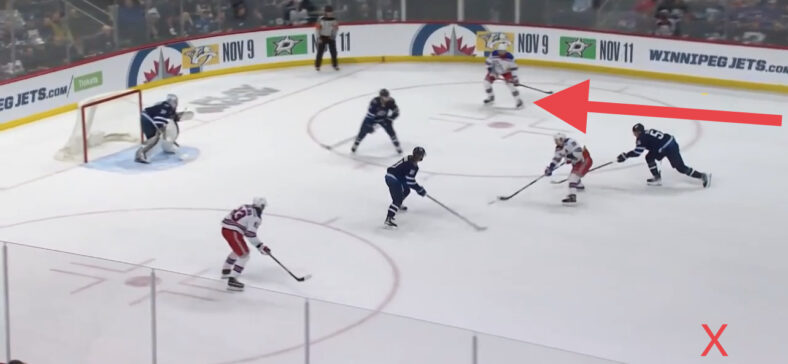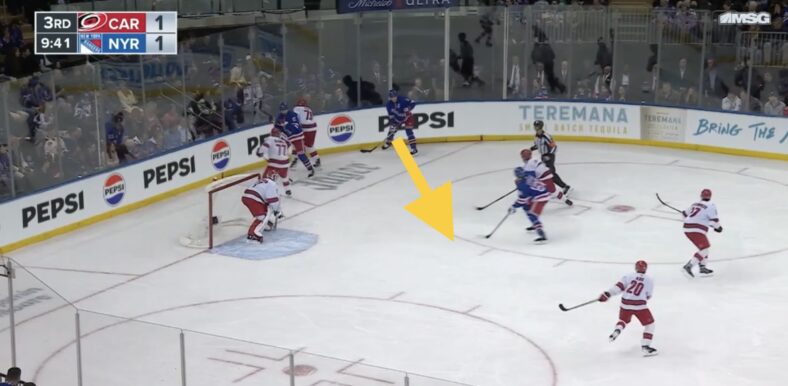
What a difference a month makes huh? Prior to the start of the regular season, skepticism for Laviolette and his systems were higher than what I thought he deserved. A quick read of the comments upon his rumored hiring shows a pretty divided a fan base at that point. Fast forward to almost 15 games in and what a sea of difference in perception.
To be fair, there’s still a lot of season left to play. Ultimately, what the Rangers do in the postseason is what will define Lavi’s and Drury’s offseason report card. However, from the early goings, even the most critical of fans have to admit this team is a pure joy to watch night in and night out.
Just before the start of the season, I did a deep dive into Laviolette’s systems. We covered forechecking systems, defensive zone coverages, bench management philosophy, and line combinations. That forecast has played out pretty much right on target, with results from that I have to admit are better than expected.
However, there’s another wrinkle in tactics that I’ve noticed in the early goings that’s worth highlighting and will play a role in our future success.
Individual player structure
One of the things that has struck me early is how Laviolette organizes his players structurally. It almost reminds me of a system in soccer called Total Football. Total football is a tactical playing theory that is all about creating fluidity in which no outfield player remains in a fixed role. Any player can switch between defense, midfield, and attack. The only player expected to remain in their position throughout the game is the goalkeeper. Total Football allows teams to overwhelm their opponents using a mix of pressing, positional fluidity, and technical skill.
Obviously, something like this wouldn’t completely work in hockey given that there is only five skaters on the ice vs. soccer’s ten. However, the Rangers play reminds me of it in that we are starting see non-Adam Fox defensemen take more chances up ice.
Offense from defense

Take for example this play by K’Andre Miller, who in past seasons would be standing near the blueline occupying the space of the “left defensemen” (the red x). Yet on this sequence, he’s a right winger playing below the hashmarks and just fed Panarin, who in turn fed Zibanejad.

In this image above, we have a tied game late-ish in the 3rd period. This is a time when most defensemen wouldn’t be taking any chances, especially one with more defensive responsibilities. Yet on this play, Trouba has decided to come in and support Wheeler on a 50/50 puck down low and makes a patient play to Will Cuylle for the game winner.
These plays might seem anecdotal, but its something I’m noticing a lot. Lindgren is hunting down low. Trouba is forechecking. Schneider is also getting in on the fun. The most important component to all of this is forwards are committed to back checking. They are replacing defensemen on the blueline, who are dive bombing below the hashmarks. This style of play simply does not work without forwards committed to the back end.
As for defensive pairings and usage, I don’t expect much to change. Fox and Lindgren work no matter what you throw at them. Miller and Trouba have a 56% high danger chance ratio. That is one of the top defensive combos in the league, despite them drawing tough assignments, and only starting about 40% of their shifts in the OZ. Dollar for dollar, Gustafsson is looking like possibly the best FA pick up of Drury’s tenure.
So what does this all mean for the end game?
Although the numbers don’t reflect it yet, I think you are going to see the blueline put up points. This is going to be important because the Rangers don’t have a lot of offensive depth after their top 6. Especially now that they are dealing with injuries, Wheeler looks to be running on fumes, and Kakko is still figuring out how to play within this concept of speed of puck movement. Until Drury can assess the trade market, offense from defense might be have to pick up the slack when our top 6 isn’t going. Stay tuned Blueshirt faithful.
More About: Hockey Tactics
